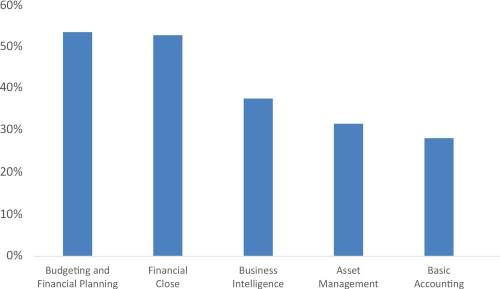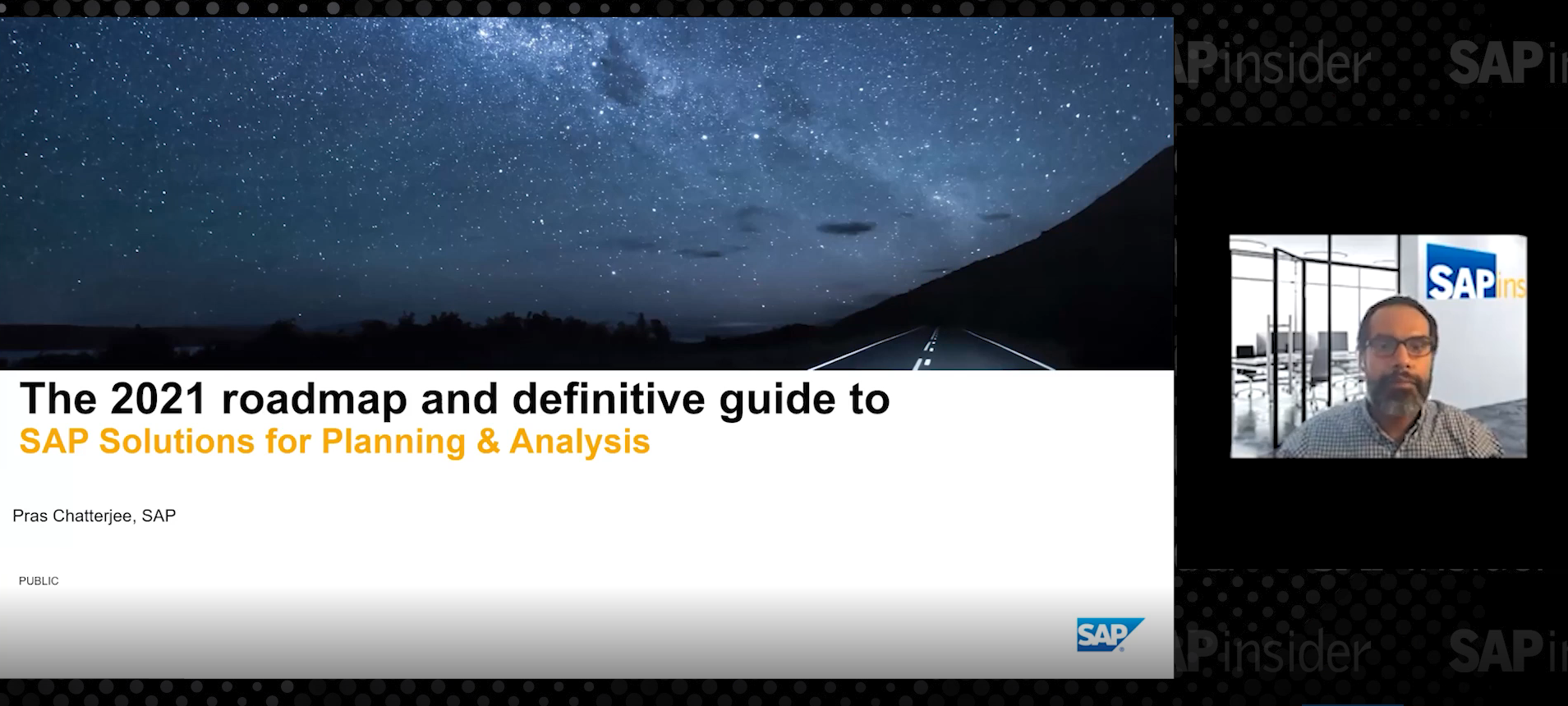Enhance SAP BPC: Discover How to Take Financial Planning to the Next Level
Extend Your SAP Business Planning and Consolidation Application with SAP Analytics Cloud
By Lauren Bonneau, Senior Editor, SAPinsider
Finance in today’s economy should not be reporting on data that is irrelevant, but rather it should act as a steward for the organization — steering from the front of the boat — predicting the future and guiding the business lines it supports.
The previous edition of SAPinsider magazine published an article on this very topic called “It’s Time for Finance to Captain the Boat: Guide Your Organization with Real-Time Planning and Analysis Using SAP S/4HANA Finance Combined with SAP Analytics Cloud,” which dove into the topic of financial planning and analysis (FP&A) and shared findings from a recent SAPinsider benchmark report, “SAP S/4HANA Finance: State of the Market.” While this report and the article were focused on strategies involving the move to SAP S/4HANA Finance, they both describe a trend that is relatable for all SAP customers, and especially those focused on FP&A functions.
The research uncovered that the SAP customers surveyed listed “budgeting and financial planning” as their top financial concern, with 53% of respondents citing it as their current pain point concerning ERP finance (see Figure 1).
Figure 1: The current pain points cited by SAP customers concerning ERP finance

Additionally, the top financial strategy these organizations are prioritizing, according to 62% of respondents, is modernizing reporting for faster business insights.
Clearly, organizations are experiencing a need for analytics to complement their financial planning capabilities. This is due, in part, to some changes in how financial roles across companies are currently organized. People who are planning today are not only sitting in the office of the CFO counting beans day in and out. There are finance people in IT, marketing, sales, operations, and human resources controlling budgets for these lines of business. With this proliferation of planners, it’s time to move away from reliance on spreadsheets and, at a minimum, start complementing them with planning and analytics technology.
Modernizing Your FP&A Environment
“Planning today should no longer be executed on a scheduled manner — creating plans once a month, forecasting once a year, or updating budgets twice a year,” says Pras Chatterjee, Senior Director of Product Marketing for Planning Solutions at SAP. “Rather, it’s about finance being able to put their finger on the pulse of a business.”
There are many options SAP customers have when looking at updating the software for their FP&A needs. As the previous SAPinsider article introduced, there are great planning capabilities in SAP S/4HANA Finance, and SAP Analytics Cloud is SAP’s strategic analytics tool for both planning and business intelligence (BI).
However, there are many SAP customers that are not yet ready to migrate to SAP S/4HANA or move to the cloud, or they have recently invested in the SAP Business Planning and Consolidation (SAP BPC) application.
Many SAP customers over the past several years have invested in SAP BPC for their planning needs, some of which are already using the application in conjunction with SAP S/4HANA, while others are using it with SAP ERP or non-SAP back-end systems. Some notable examples of successful SAP BPC implementation stories, which were showcased in SAPinsider magazine, include Cameron, a Schlumberger Company, Stepan Company, IDEXX Laboratories, JetBlue Airways, and Hunt Consolidated.
SAP BPC as a planning and consolidations tool has strong modelling and planning capabilities for multiple scenarios. However, since it’s an on-premise solution, it requires IT support to handle the data warehouse or database it sits on. Oftentimes, it requires finance to leverage a shared service center to manage the servers, upgrades, service packs, and items of that nature.
“Existing SAP BPC customers should take a look at how they are planning and how they can transform, elevate, and extend it with SAP Analytics Cloud to become better business planners, partners, and constituents,” Chatterjee says. “With this combination, users will have more relevancy because they’ll be using the latest SAP analytics platform that does planning, predictive, and BI to better complement what they currently do.”
Opening Up FP&A Beyond “Traditional” Finance
There is a common misconception that SAP BPC support has reached end of life, but that couldn’t be farther from the truth, according to Chatterjee — as evidenced in SAP’s product availability matrix, which shows SAP will be investing in and supporting SAP BPC until 2025. “If SAP BPC customers want to take advantage of new planning functionality, all planning functions that are available in SAP Analytics Cloud are available for SAP BPC customers to use,” he says. “SAP BPC is not dead or going way, rather it is being complemented via SAP Analytics Cloud, which is fully integrated with SAP BPC bidirectionally — meaning users can take SAP BPC data and master data and move it in SAP Analytics Cloud and take SAP Analytics Cloud data and move it back into the SAP BPC application.”
Customers have expressed total enthusiasm for the ease and agility the combination of SAP BPC and SAP Analytics Cloud provides, according to Graylin Johnson, Managing Partner, Analysis Prime. “We have heard many customers remark on how they are benefiting from the advanced visualization capabilities and smart features, such as automated variance analytics with Smart Insights, Natural Language Query with Search to Insight, out of the box disaggregation, and user-friendly scenario planning.”
Reporting capabilities is one area of SAP BPC that is ripe for improvements to reach a larger audience. Once SAP BPC users create their budgets and forecasts with the solution, the main reporting tool to present that data is a Microsoft Excel add-in. The application’s users widely adore the solution, according to Chatterjee, because the primary audience for SAP BPC is finance and accounting people who love to live and breathe in spreadsheets; however, the business partners that finance needs to communicate and share information with do not. “If finance individuals rely on banking apps in the real world to provide their personal banking information and spending trends — as opposed to downloading a CSV file and parsing it in a spreadsheet to understand their fiscal situation — why would they not share financial information with business constituents in the same manner?” he says. “To be a better business partner, you really have to go beyond Excel and use analytics, and that’s where SAP Analytics Cloud comes in.”
Using SAP Analytics Cloud with or in place of SAP BPC can open FP&A functions up to a wider swath of users than ever before. “Because it’s cloud-based analytics with dashboards, web-based grids and input screens, there’s no reliance on IT and no application or database layer to deal with and so it is easy for everyday users to manage on their end — whether they are modelling, reporting, or bringing in data,” Chatterjee says. “For example, if you’re a salesperson entering in a forecast or an HR person entering in head count, the interaction is very easy. You simply log into SAP Analytics Cloud directly through your web client or through your phone.”
In addition to offering FP&A functionality and visualization capabilities to people outside of “traditional” finance, SAP Analytics Cloud offers customers access to cutting-edge technology not available in SAP BPC, such as built-in machine learning, artificial intelligence (AI), and predictive planning capabilities. Once users bring the data in, the solution will allow them to create forecasts on the fly and provide automated analysis of plans and budgets. There’s also natural language query functionality where users can type in questions (such as “what is my gross profit for this business for last year?”) and receive the answer immediately.
“It’s almost like having an extra head count or body to help deliver better insights into your data, which you can then better deliver to your business constituents,” says Chatterjee. “Whether you have SAP S/4HANA or not, if you are an SAP BPC user complementing your planning process with SAP Analytics Cloud, you can communicate your data better; create planning model scenarios that cater to everybody; analyze, predict, and report all in one area; connect with the digital boardroom; and use machine learning, AI, and predictive capabilities to be a better planner and drive better analysis.”
Customers might wonder if using SAP Analytics Cloud on top of SAP BPC means some intense reimplementation or massive rework is required. However, that is not the case, according to Chatterjee. “You can sign up for SAP Analytics Cloud today and move your SAP BPC model over right off the bat, and with some minor configuration, away you go. It’s not a brand-new project or iteration that will take months but something that you start immediately,” he says. “The goal for anyone in planning is to have an income statement for their budgets and forecasts where every line item is populated in a credible manner from the right sources. Extending SAP BPC with SAP Analytics Cloud in a collaborative manner via crowdsourcing budgets and forecasts from everybody in the organization means you can still use SAP BPC to read that info or bring it in but you’re leveraging the power of SAP Analytics Cloud to perform better analysis of your data.”
Customers that are using SAP BPC and SAP Analytics Cloud in conjunction are finding huge benefits. For example, Airbus SE has seen tremendous time savings. “From daily postings to monthly close, SAP BPC and SAP Analytics Cloud are reducing by 40% to 60% the time we spend gathering and preparing financial data, depending on the area. This is a huge savings for us,” says Richard Masci, Head, Financial Systems Airbus Americas, Airbus SE.
Companies that leverage the two solutions together on their SAP journey are “future-proofing” their SAP investments, according to Chatterjee. “They are leveraging the latest analytics technology that SAP built with finance and planners in mind so that gives them a much better planning experience,” he says. “And most importantly for SAP BPC customers, they don’t have to switch right away from one tool to another. They can enhance their existing SAP BPC investment with SAP Analytics Cloud and decide over time if they want to use them both in conjunction or one completely “
2020 Is Here: Start Planning Now
Keep an eye out this year for new SAP Analytics Cloud functionality. Even though the solution was built with analytics in mind, it is not aiming to ignore Excel entirely. In Q1, a new add-in will be officially released called “The SAP Analytics Cloud Add-In for Microsoft Office,” which will fully support all versions of Office 365 — desktop, web, or mobile – so users can analyze the plan and actuals data in SAP Analytics Cloud on any device through Office 365.
Now that we have entered 2020, it’s a new decade and a brand-new fiscal year for many finance organizations. For those charged with financial planning and analysis, it’s a great time
to think about starting the new year in an enhanced state, according to Chatterjee. “It’s time to look at the way you plan and learn how you can extend SAP BPC with SAP Analytics Cloud,” he says. “Discover how by extending it, you can deliver much better plans and forecasts and be a better business partner in a more nonintrusive, complementary manner.”
To try out SAP Analytics Cloud on a trial basis, visit https://www.sapanalytics.cloud.





